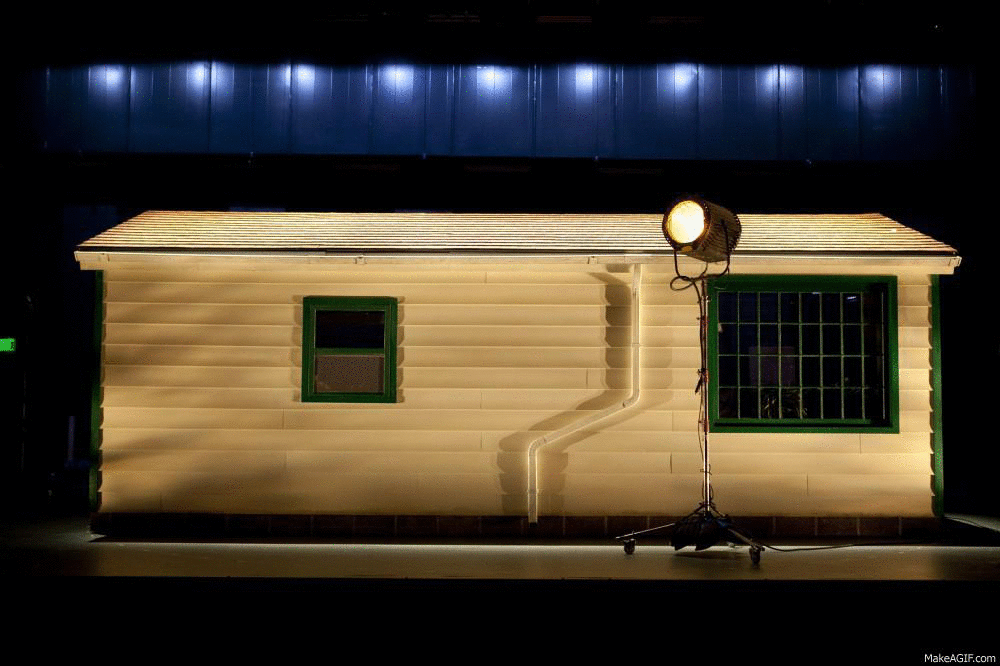
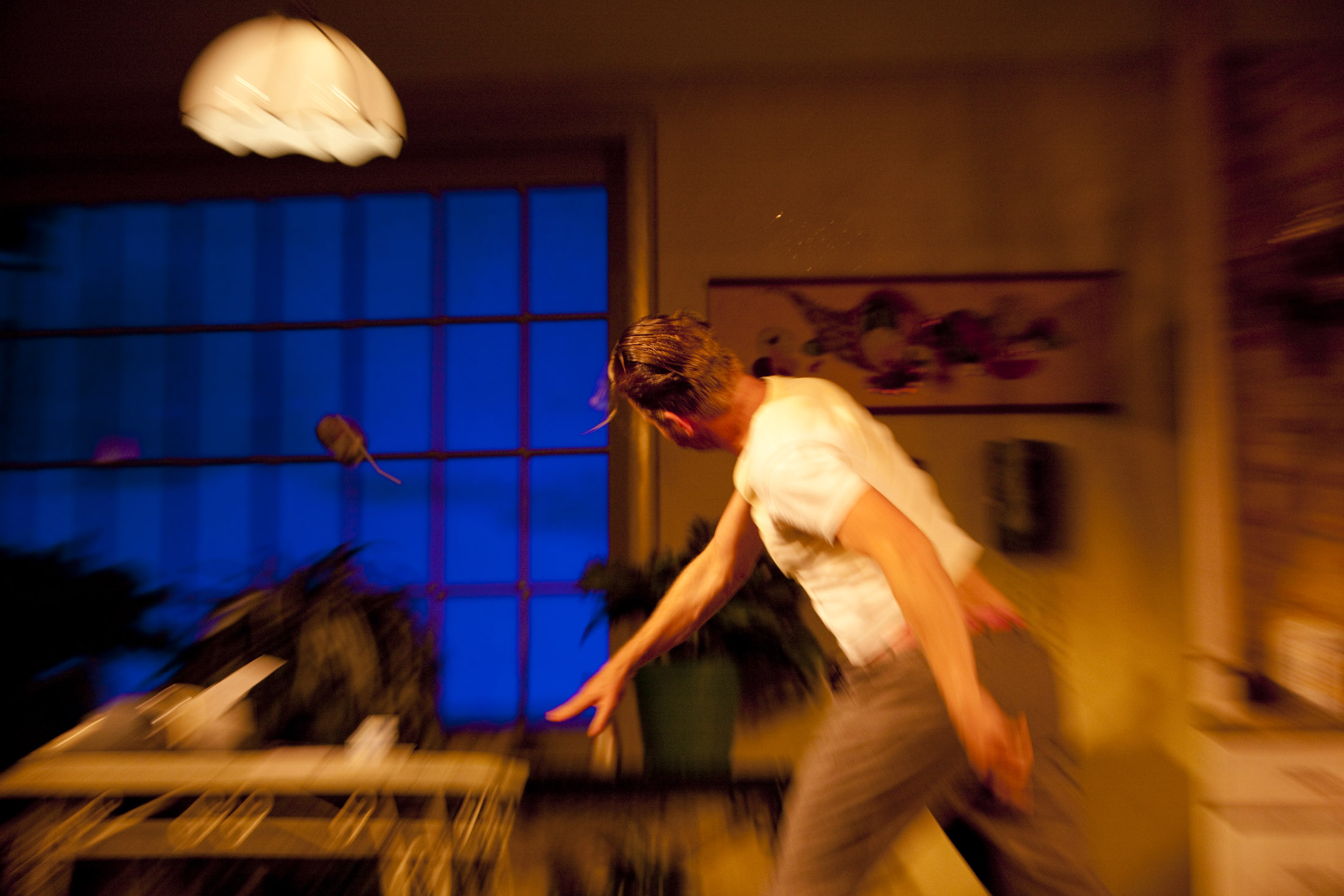
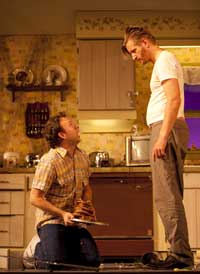
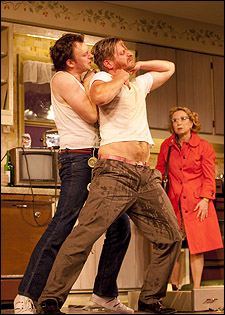
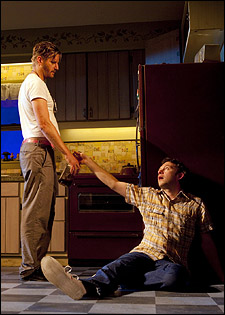
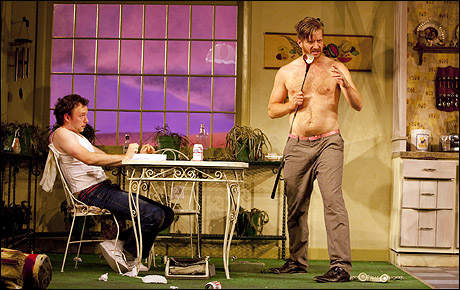
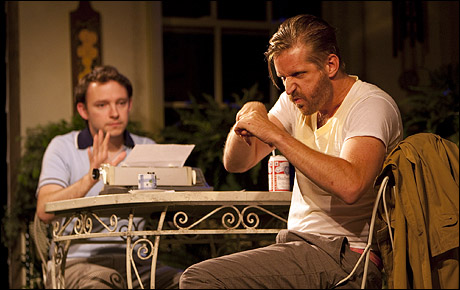
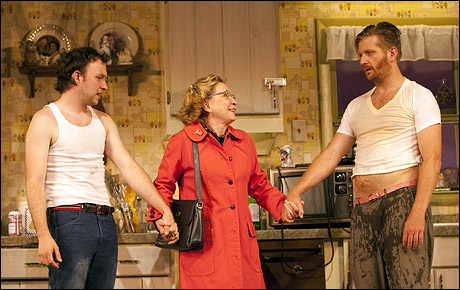
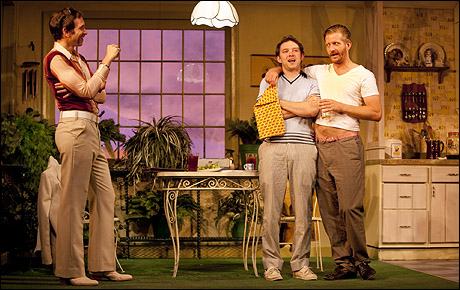
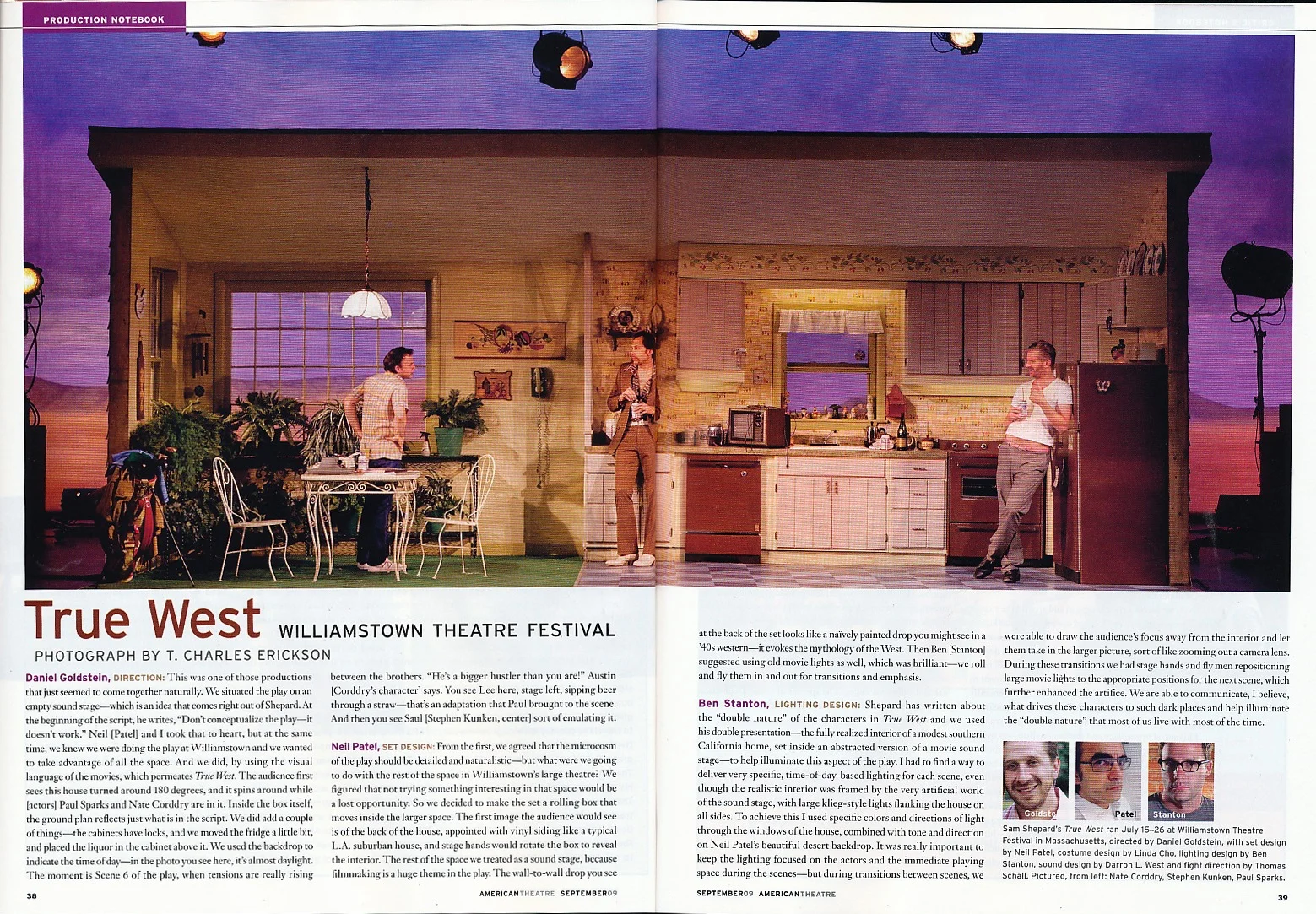
TRUE WEST
by Sam Shepard
Williamstown Theater Festival
Sets: Neil Patel
Costumes: Linda Cho
Lights: Ben Stanton
Sound: Darren L. West
“Goldstein makes the tensions and contradictions palpable but not obvious - and he also allows us to develop our own complex reactions to the story, rather than letting it slip toward either glorifying or condemning the particular brand of American machismo that Shepard explores.”
More Press
This production had our attention even before the play began. We started the evening contemplating the back of what appeared to be a ranch house in a California suburb, on the edge of the Mojave Desert, somewhere about 40 miles from LA. A crew of Ninja stage hands emerged and rotated the house to reveal a modest home. Behind the house, designed by Neil Patel, was a backdrop signifying, like a Georgia O'Keeffe painting, the undulating line of sand dunes. There were enormous light elements by Ben Stanton that were raised and lowered to signify the passage of day to night. Scenes were also marked by brilliant musical intervals designed by Darron L. West including fragments of Country and Western Music. Was that a bit of Hank Williams we heard? Or was it Jimmie Rodgers?
-Charles Giuliano, Berkshire Fine Arts
Daniel Goldstein’s production is as smart as the work of his two lead actors. Neil Patel’s set design opens with the plain exterior of a ranch house, isolated against a blue desert sky. Then, as “stagehands’’ wheel giant movie-style lights into position, the house rotates to reveal its interior, a pitch-perfect rendition of the 1980 suburban kitchen in which all the action takes place.
The hints of moviemaking recur throughout, with more lights being raised and lowered to suggest a change from day to night; Ben Stanton’s lighting design also modulates the backdrop colors to create everything from stark desert noon to tranquil suburban twilight. Sound designer Darron L. West contributes a witty play on the Hank Williams tune that Shepard specifies for the break between acts: “Ramblin’ Man’’ plays out, then gives way to a familiar sound that’s hard to identify at first, because it’s rarely heard these days. It’s the repetitive thump-scratch of a needle hitting the center label of a vinyl record.
That’s brilliant because it nails Shepard’s central concern, both in “True West’’ and elsewhere. He’s writing at once about our fantasies - particularly men’s fantasies, it must be said - of the West and of the “true’’ Western man, and about the reality that contradicts those fantasies, and probably always has. We hear an authentic twang in Williams’s sorrowful voice, but the authenticity is canned.
Goldstein makes the tensions and contradictions palpable but not obvious - and he also allows us to develop our own complex reactions to the story, rather than letting it slip toward either glorifying or condemning the particular brand of American machismo that Shepard explores. This “True West’’ has the hard, bracing poetry of the desert, along with the absurd misery of the suburb. It’s a modern Western fable with the deceptive ring of truth.
-Louise Kennedy, The Boston Globe
Goldstein’s best move is finding so much of the comedy that lurks in Shepard; which is so often left out.
-Michael Eck, Times Union
It may well prove to be Williamstown’s hit of the season. Besides it’s talented cast, the magnificent set, ingenious lighting (especially the lowering and raising blue moon spots or day-time blistering suns.), and great supporting sound (by Darren L. West) not only of coyotes and crickets but of music linking the scenes. Director Daniel Goldstein can be proud of this production which seems to me, with limited Shepard experience, to have captured whatever it is that makes a Shepard play True Shepard, whatever that is!
-Frances Benn Hall – Berkshirelinks.com
